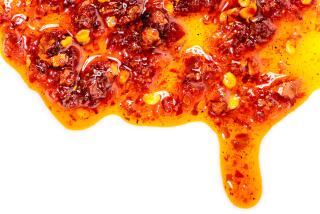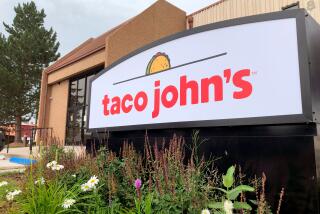Tech retailer turns off the ‘Radio’
- Share via
RadioShack Corp. recently announced that it is forthwith to be known as The Shack and launched a campaign to get consumers used to the new image.
“We’re contemporizing the way we want people to think about our brand,” Lee Applbaum, RadioShack’s chief marketing officer, said of last week’s announcement.
Companies rename themselves for a variety of reasons. William Lozito, president of Minneapolis-based brand-naming company Strategic Name Development Inc., calls RadioShack’s move a “name-ectomy” and compares it to Pizza Hut’s decision in June to call itself The Hut. The shortening is a nod to the abbreviated, text-message-driven nature of youth culture, Lozito said.
“For RadioShack, what the heck do they have to lose?” he said. “They have to become more relevant. There’s very little downside to giving up ‘radio’ -- who buys radios anymore?”
Lozito said Pizza Hut’s founders had initially wanted to call the restaurant Pizza Shack but didn’t have enough room on the sign. If they had, this summer could have been the season of competing Shacks.
Here’s a look at a few other notable name changes and the stories behind them:
--
Not just ‘fried’
Old name: Kentucky Fried Chicken
Now known as: KFC
Why the change: To tout its non-fried offerings. Kentucky Fried Chicken opted for an abbreviated form of its name in 1991, though it continues to use both forms. At the time, one of its executives told USA Today that “the name ‘Fried’ is very limiting.” An alternative story -- that KFC made the change to avoid paying royalties to the state of Kentucky, which had trademarked “Kentucky” -- is untrue, a spokesman says.
Postscript: KFC went on another health kick in the spring with its big rollout of Kentucky Grilled Chicken. But a promotion to give away free grilled chicken went awry when chicken-seeking customers overwhelmed supplies.
--
Tuning in to a hit
Old name: Galvin Manufacturing Corp.
Now known as: Motorola Inc.
Why the change: To update its image to emphasize a hit product. The company coined “Motorola” for a car radio it introduced in 1930. The Chicago-based manufacturer adopted it as its moniker in 1947, dropping Galvin, the founders’ family name.
Postscript: Motorola plans to split its mobile phone division from its other business units, forming two separate companies. It’s unclear what will happen to the name.
--
Top branding
Old name: Matsushita Electric Industrial Co.
Now known as: Panasonic Corp.
Why the change: To take advantage of the strongest brand in its portfolio. The Japanese electronics maker, founded as Matsushita Electric Housewares Manufacturing Works in 1918, wanted to unify its image under its well-known Panasonic brand. The name change went into effect in 2008.
Postscript: Panasonic is also phasing out its National brand, which is used for home appliances. All products will be branded Panasonic after March 2010.
--
Their married name
Old name: ValuJet Airlines
Now known as: AirTran Airways
Why the change: To reflect the marriage of two companies. ValuJet acquired AirTran in 1997 and chose the AirTran name, leaving behind memories of the 1996 ValuJet crash in the Everglades that killed all 110 aboard.
Postscript: The name change was part of an image overhaul. AirTran, a little-known carrier at the time of the ValuJet deal, has since undertaken a substantial expansion.
--
More to Read
Inside the business of entertainment
The Wide Shot brings you news, analysis and insights on everything from streaming wars to production — and what it all means for the future.
You may occasionally receive promotional content from the Los Angeles Times.










